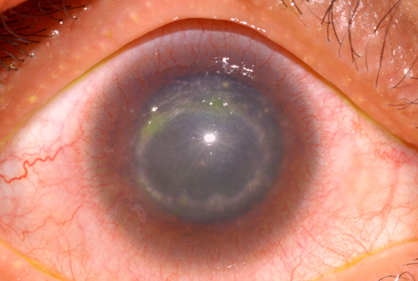Acanthamoeba keratitis is a seldom recorded infection; however, it is a serious condition hence it should not be overlooked or taken lightly. This infection is influential on the eyes and if not treated timely, then it may lead to ocular impairment or blindness on permanent basis. It is studied that the infection is caused due to free- living microscopical amoeba which are also known as Acanthamoeba. When these microorganisms, Acanthamoeba, infects the cornea of the eye (external transparent layer of the eye) it leads to Acanthamoeba keratitis. Human are at greater risk of developing this infection, as this kind of amoeba are frequently found in various water bodies such as lakes, soil air etc. This condition for first diagnose in the 1973, wherein approximately 90% of affected individuals were contact lenses users.
Acanthamoeba keratitis- causes:
There are several factors that may lead to Acanthamoeba keratitis. For example, using contaminated water from sources such as tap or well may increase the risk of such infection. Also infected contact lenses may cause such issues. Avoid wearing contact lenses while in hot tub or swimming in pool or even while taking shower as these factors may also result in acanthamoeba infection. Adopting inappropriate measures for storing contact lenses may cause the virus to settle on the lenses and then infect your eyes on wearing them. According to recent reports it is believed that U.S Environmental Protection Agency’s action of removing carcinogen agents from water may have unknowingly increased the risk of infections caused due to microbes. It is reported that most cases of Acanthamoeba keratitis is due to unhygienic contact lenses. The infection may also transmit by touching any infected source and then touching your eyes.
Irrespective of the cause of the infection Acanthamoeba keratitis can be treated and Acanthamoeba can be eradicated easily.
Acanthamoeba keratitis – Diagnosis
There are certain ways in which Acanthamoeba keratitis can be diagnosed. The diagnosis may include detecting ameba in laboratory settings, wherein blood agar plate is treated with E.Coli layer. Then a portion of the contact lenses will be placed on the prepared agar place. In case there are acanthamoeba on the lenses then a patch will be visible on the area of the lenses. In other cases wherein contact lenses are not the source of infection, then polymerase chain reaction technique can be utilized to diagnose the infection. Sometime diagnosis can be done by looking at the corneal ulcer developed during progressed stage of the infection.
Acanthamoeba keratitis- symptoms
Some of the common symptoms of Acanthamoeba include:
- Redness of eyes
- Ache in eye
- Conjunctivitis
- Inflammation in eyes
These are some common symptoms of acanthamoeba infection; however, there are some other symptoms which may look like ‘pink eye signs’ which may also make it difficult for the doctor to diagnose the disease. Irrespective of the symptoms if you suspect that you or anyone in your family is suffering from Acanthamoeba keratitis, then seeing doctor immediate is essential.
Acanthamoeba keratitis Treatment
• One of the common treatments used for treating Acanthamoeba keratitis is PHMB or Polyhexamethylene Biguanide.
• Propamidine isethionate has also proved to be effectual in treating the eye infection.
• Another chemical antiseptic, named as chlorhexidine, is also used in treatment for acanthamoeba infection.
• In certain cases even Karatoplasty may be necessary
There are other treatments for Acanthamoeba keratitis which may include combined regime of more than one medication. It is essential to seek immediate timely treatment for acanthamoeba infection in order to keep it from progressing.
